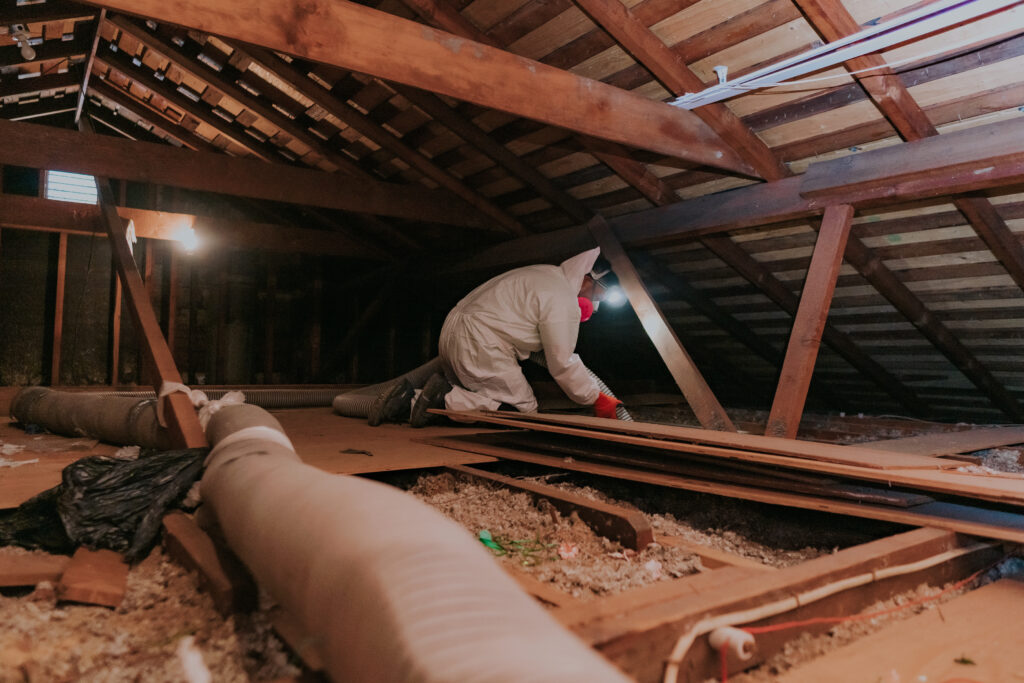Does My Old House Need an Attic Insulation Upgrade?
As a homeowner, it’s essential to ensure your attic insulation is in top shape. Upgrading your attic insulation will not only improve your home’s energy efficiency but it will also help you save on heating and cooling costs.
In this attic insulation upgrade guide, we will discuss the importance of attic insulation, the different types of insulation available, and how to determine if it’s time for an upgrade. We’ll also provide helpful tips on insulating your attic and maintaining the insulation to maximize energy efficiency.
Benefits of Upgrading Attic Insulation
Upgrading attic insulation comes with several advantages that every homeowner can appreciate. Let’s take a look at some of the most significant benefits:
Increased energy efficiency: Proper attic insulation helps maintain a consistent temperature throughout your home, reducing the strain on your heating and cooling systems as well as the environment.
Improved comfort in the home: When your attic is well-insulated, it helps prevent drafts and temperature fluctuations, ensuring that your living spaces are more comfortable year-round.
Reduced energy bills: As your home becomes more energy-efficient, you’ll notice a decrease in your monthly energy bills. Upgrading attic insulation is an investment that can pay for itself over time through these savings.
Lower environmental impact: By increasing your home’s energy efficiency, you’re also reducing its carbon footprint. This is a small but meaningful step you can take as a homeowner to help combat climate change and protect the environment.
Increase your home’s value: Improving your home’s energy efficiency by upgrading attic insulation can make it more appealing to potential buyers and may increase its value. Energy-efficient homes typically have lower energy bills and are more comfortable to live in, which can be attractive to prospective buyers.
How to Know if Your Attic Needs an Insulation Upgrade
How can you tell if your attic insulation is due for an upgrade? Here are some factors that can help you determine if it’s time to add new insulation:
Age of the insulation: If your home is an older one, chances are the existing insulation may be outdated or insufficient. Older homes built before the 1980s have less insulation than modern homes, making them prime candidates for an upgrade.
Fluctuating temperatures in the house: If you notice that certain rooms in your home are consistently colder or warmer than others, it could be a sign that your attic insulation is inadequate or uneven.
High energy bills: If you are consistently paying a lot more than you should for energy, it might be a sign that your home is not well-insulated. Upgrading attic insulation is an energy saving home improvement that will pay off.
Uneven or thin insulation coverage: Inspect your attic and check the amount of insulation present. If it appears thin, uneven, or compressed, it’s likely time for an upgrade.
Pest infestations: Pests like rodents and insects can damage insulation, reducing its effectiveness. If you’ve had a pest problem in your attic, consider upgrading your insulation once the infestation has been dealt with.
Types of Attic Insulation
There are several types of insulation to choose from. Each type has its advantages and is suited for specific situations. Here’s an overview of the most common types of attic insulation:
Blanket Insulation
You can find blanket insulation in two different forms – batt and roll insulation. Both are made from materials like fiberglass, mineral wool, or cellulose, and are easy to install between rafters or studs.
- Batt insulation: Batt insulation comes in pre-cut panels that fit between rafters or studs. It’s a popular choice for DIY insulation projects due to its ease of installation.
- Roll insulation: Roll insulation is similar to batt insulation but comes in long rolls that can be cut to fit specific spaces. It’s ideal for large areas with uniform spacing between rafters or studs.
Loose-fill Insulation
This insulation is created from small particles of materials like fiberglass, cellulose, or mineral wool. It’s excellent for filling irregular spaces or adding insulation on top of existing insulation. A blowing machine ensures even distribution over the attic floor and between the floor joists.
- Fiberglass Insulation: Fiberglass loose-fill insulation is lightweight, non-combustible, and resistant to moisture damage.
- Cellulose Insulation: Cellulose, available as loose-fill or blown in insulation, is made from recycled paper products and is treated to be fire-resistant. It’s an eco-friendly option with good thermal performance.
- Mineral wool Insulation: Mineral wool loose-fill insulation is made from rock or slag and offers excellent fire resistance and soundproofing properties.
Spray foam insulation:
Spray foam insulation is the best option for achieving maximum insulation levels by sealing air leaks.
Insulation contractors apply the spray as two different chemicals that combine to create a foam that expands to fill gaps, holes, and all the awkward spaces typically found in an attic. It’s an excellent option for insulating irregularly shaped spaces or hard-to-reach areas in the attic.
Choosing the Right Insulation Material
Selecting the best insulation material for your attic depends on several factors. Here are some key considerations to help you make the right choice:
Determining the R-value: The R-value is a measure of an insulation material’s resistance to heat flow. Higher R-values mean better insulation. Check the recommended R-value for your region and choose a material that meets or exceeds that value.
Evaluating your attic’s specific needs: Consider the unique aspects of your attic, such as the spacing of rafters or studs, the presence of any air leaks, and whether you need to add insulation on top of existing insulation. This information will help you determine the best type of insulation for your situation.
Budget and cost considerations: Insulation materials vary in price, so you’ll need to factor in your budget when choosing the best option. Keep in mind that while some materials may be more expensive upfront, they can offer long-term savings by making your home more energy efficient.
Environmental impact of the insulation material: Some insulation materials, like cellulose, are made from recycled materials and have a lower environmental impact. If sustainability is important to you, consider choosing an eco-friendlier option.
Hiring a Professional vs. DIY Attic Insulation Upgrade
When it’s time to upgrade your attic insulation, you may be wondering whether to hire a professional or tackle the project yourself. Here are a few pointers to help you make the decision:
Assessing your skills and experience: If you have previous experience with insulation projects or are confident in your DIY abilities, you may choose to insulate your attic yourself. However, if you’re unsure or inexperienced, it’s best to hire a professional to ensure the job is done correctly and safely.
Weighing the pros and cons: While DIY insulation projects can save you money, they may also be time-consuming and require specialized tools. Hiring a professional ensures the job is completed quickly and efficiently but may come with a higher upfront cost.
Safety considerations: Insulating an attic can involve working in tight spaces, dealing with potentially hazardous materials, and navigating around electrical wiring. If you’re not comfortable taking on these risks, it’s best to hire a professional.
Upgrading your attic insulation is a key step in improving your home’s energy efficiency and reducing energy bills. By learning about the several types of insulation, identifying when it’s time for an upgrade, and selecting the right material for your needs, you can make a significant impact on your home’s comfort and environmental footprint.
When you choose to hire professional attic insulation installers you will ensure your insulation’s effectiveness for years to come. Call to learn more or book in a free appraisal of your attic.

